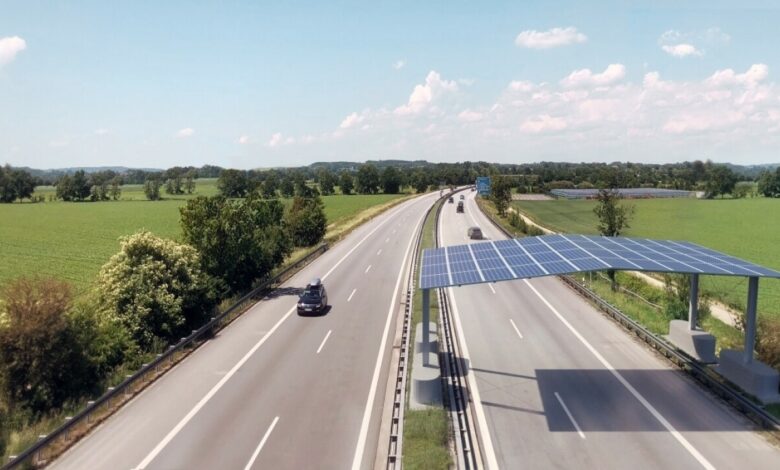
The Ministry of Transport is launching a pilot project on the A81 motorway: a solar panel is to generate electricity there. Germany is thus following Switzerland, which recently announced a similar project. However, widespread use is not expected in the medium term.
Practicality test
The pilot project that has now been announced is primarily intended as a practicality test: it is intended to show that it is possible to generate electricity above moving traffic. The location of the test is the Hegau-Ost rest area on the A81. A 10 x 17 meter photovoltaic module will be installed here, supported by steel girders 5.50 meters above the roadway. In addition to the purely technical feasibility, the main aim is to demonstrate that continuous operation is possible and cost-efficient.
The project now presented by the Ministry of Transport is the second part of a research project that began last year. Researchers from Germany, Austria and Switzerland have developed a concept for the roofing of highway sections with photovoltaic modules. Now it is coming up for a practical test.
No widespread application in the medium term
At the same time, however, a spokeswoman for the ministry announced that a nationwide installation of such solar roofs is not to be expected in the medium term. This is mainly due to the fact that larger areas are still available on which solar panels can be installed much more easily and cost-effectively. The spokeswoman pointed out, for example, that installation above the highway is significantly more expensive than on an open area or on the roof of a house, since the overall construction must be designed to be accident-proof. Moreover, from a roofing length of about 80 meters, the construction would have to be classified as a tunnel and would thus have to meet further safety requirements.
At the same time, however, the more extensive roofing with solar panels appears to be quite advantageous on several levels. In addition to environmentally friendly power generation, for example, researchers also see benefits for traffic traveling under the panels as well as for the road surface: the photovoltaic panels protect drivers as well as the road surface from precipitation and overheating, which can reduce the risk of accidents during large-scale use and increase the life of the road surface.
Switzerland seeks land
Switzerland already appears to be a step ahead on the road to wider use. There, the search is currently on for all highway surfaces that are suitable for roofing with photovoltaic modules. Up to 1,300 kilometers of road surface are being considered.




No replies yet
Neue Antworten laden...
Neues Mitglied
Beteilige dich an der Diskussion in der Basic Tutorials Community →